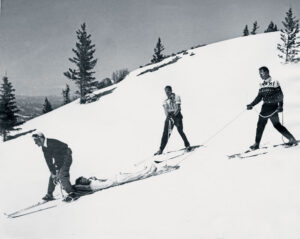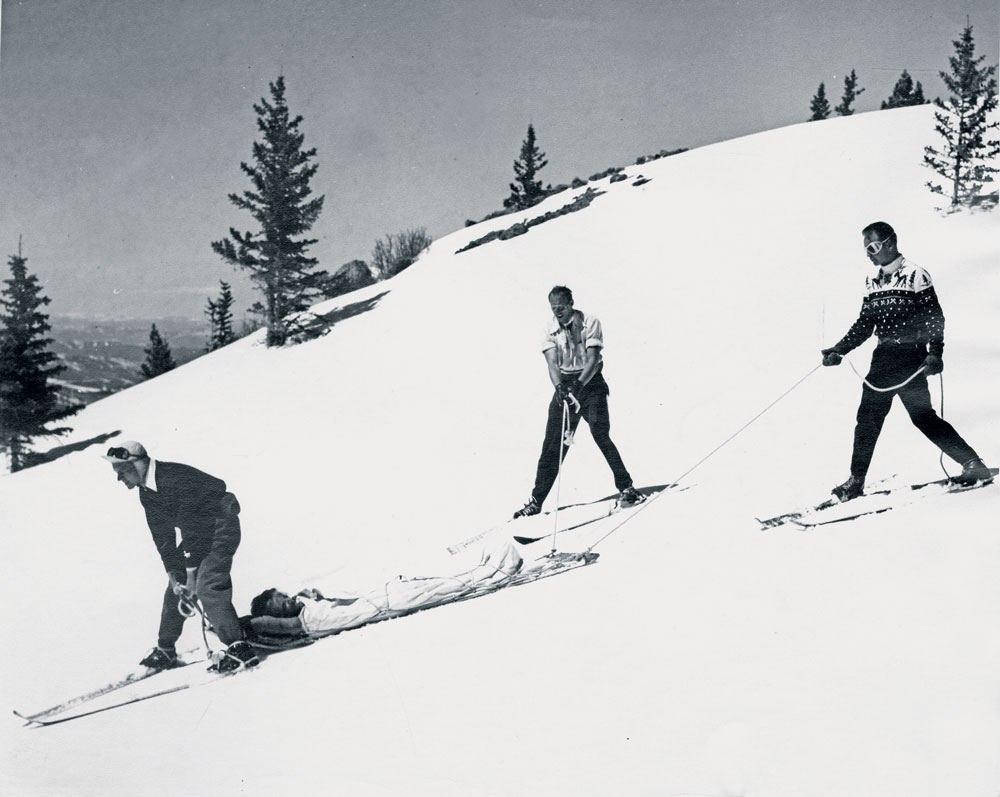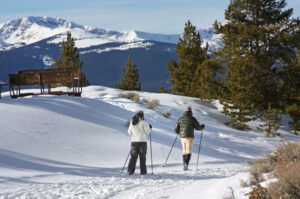By John Cameron
Emblazoned with the familiar cross on their jackets and packs full of gear, patrollers are able to respond to most any situation on the ski hill. The level of emergency response would not be what it is today without the foresight of one man who built an army that would lead to safer mountains for generations to come.
On the East Coast, skiing as a sport was beginning to gain some traction and inspiration struck Charles “Minnie” Dole in 1936 when he broke his ankle while skiing on New Years day at Stowe, Vermont, with his friend Franklin Edson. His injury left him stranded on the mountain until some volunteers were able to locate him and drag him down the hill on a piece of sheet metal roofing after dark.
His recovery was long. Dole was laid up for 15 weeks while he recovered from his injury. During that time Edson, out skiing again, this time in Massachusetts, collided with a tree. He sustained a broken arm, broken ribs and a punctured lung. Edson, who was 28, was taken to a hospital but died the following day as a result of his injuries.
The loss of a friend and his own injury was more than enough to convince Dole that there was a need for better medical response at ski mountains. Two years later, in 1938, he did something that had never been done before. He arranged a few volunteers, supplied them with rescue toboggans and stationed them alongside the race course during the National Downhill and Slalom races at Stowe. Roger Langley, the President of the National Ski Association, was so impressed by Dole’s efforts that he asked him to form a National Ski Patrol Committee which led to the formation of the National Ski Patrol.

Medical interventions on the hill at the time were basic, but greatly increased an injured skier’s ability to reach medical care at the nearest hospital. A new standard for treating injured skiers had been established.
Meanwhile, like many people of his generation, tension caused by World War II changed his path. Dole saw another practical use for people with a unique set of skills and training in mountain travel and rescue. He proposed to the U.S. War Department a mountain warfare unit, and on November 15, 1941, what would become known as the 10th Mountain Division was activated.
As a civilian, Dole took on an unprecedented role by recruiting for the U.S. Army. He contacted each of the then ninety-three NSP chapters in search of highly qualified candidates. Eligible soldiers were selected for demonstrating exemplary capability and were required to submit three letters of recommendation substantiating their ski ability.
Members of the 10th Mountain Division were stationed from 1942 to 1944 at Camp Hale, just 15 miles north of Leadville. The high peaks of the Continental Divide prepared the soldiers for combat in the Italian Alps during the war. They practiced technical mountain travel that included skiing and mountaineering. They were stalked by avalanches. Some soldiers narrowly avoided death far from the battlefield when avalanches ripped from the peaks where they trained.
After World War II, many soldiers of the 10th Mountain Division stayed committed to skiing and life in the mountains. Some went on to play major roles in establishing ski areas like Arapahoe Basin, Vail and Aspen. Others worked as patrollers following the war.
Dole remained in his position as founding director of The National Ski Patrol until he retired in 1953. His successor Ed Taylor took over on the condition that the organization be headquartered near Denver where it is today.
The National Ski Patrol now has over 30,000 patrollers represented by 650 patrol organizations. In 1980 the organization was recognized with a federal charter distinguishing it among other organizations, like the The Red Cross, for its altruistic service of promoting safety and health in skiing and winter recreation.
John Cameron is a skier, writer and patroller in Salida. He is the co-author of “Ski Patrol in Colorado,” a book about the many lies, legends and history gathered from ski patrollers across the state.



